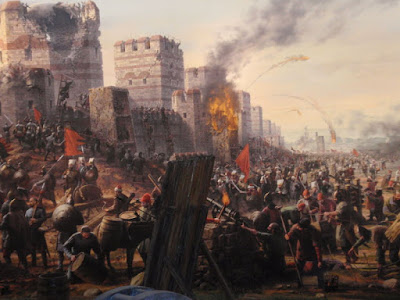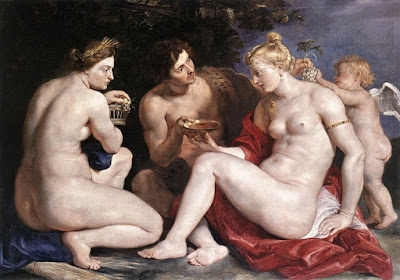 |
| The Social Construction of Reality (1966) |
The intellectual foundation of this blog is social constructionism. It is my claim that you just can’t understand kink without it. If kink is partly a subculture, then it is necessary to understand the larger societies of which it is a part. That larger culture is the context. Try as we might to define our individual identities, we do so from the material provided by the larger society. Social constructionism offers important insight about how societies work.
Social Construction is a theory that holds that the key truths of our social world are made up in an interplay with social actors; individuals and organizations who pursue various agendas or purposes. Social constructionists don’t dispute that there is such thing as a concrete reality. They all agree that a table is a table, and apple, is an apple, and The Empire State Building has 102 stories. But much of the social world is ambiguous and its rules and meanings are determined in an ongoing social exchange. Different social actors advocate and operate under differing views. Collectively these define the cultures, subcultures and micro-cultures in which all humans are embedded. Essentially, the epsitemologies of social knowledge flow through social interaction.
 |
| Peter Berger |
 |
| Thomas Luckman |
In 1966, Peter Berger and Thomas Luckman formally recognized this with their book, The Social Construction of Reality. It is one of the most influential intellectual frameworks in social science.
 |
| Portions of Saigon destroyed during Tet, 1968 |
It arrived just in time for an elaborate demonstration of its power, as Americans, who by then had all acquired the recent technological innovation of television, tuned it to see the North Vietnamese 1968 Tet Offensive. After years of escalating guerrilla warfare, the US military leadership had taken to demonstrating the success of their counter insurgency campaign by reporting the body counts of the many Viet Cong insurgents US forces had killed. US officials used these body counts to create a narrative of an increasingly weakened enemy. By taking the offensive over the Vietnamese New Year holiday, and simultaneously attacking 38 population centers, the Viet Cong and their allies demonstrated that the body counts meant nothing about their capacity to fight. To attack simultaneously and ferociously, they appeared strong despite sustaining many additional casualties. Americans watched the destruction of Hue, the old Vietnamese capitol, on the nightly news and heard doubtful news commentators openly questioning the official stories of victory. It two weeks of fighting in battles that they consistently lost on the metric of body count, the Communists completely reframed the meaning of the Vietnamese War. The American public stopped believing that victory in the Vietnam War was in sight. A domestic anti-war movement grew in power and eventually forced the United States government to the negotiating table and military withdrawal.
 |
| CBS News anchor Walter Cronkite. When he questioned administration claims about the progress of the war during Tet, U S President Lyndon Baines Johnson said privately, “If I’ve have lost Cronkite, I’ve lost the Middle America!” |
Social meaning can be shockingly fragile and subject to sweeping changes when the conditions were conducive to such change. The social construction of reality provided the intellectual basis for recognizing this. The Vietnam War on TV provided the experiential basis.
That social reality is constructed has many corollaries. For example, individuals know a great deal about the social reality of their everyday lives, their ethnicities, social roles or occupations, and have only indistinct notions about other cultures, occupations or roles in which they do not participate. Those of you who live in New York City, have visited the Empire State Building, have a passion for the architecture of skyscapers, or have read Michael Chabon may already know that the Empire State Building has 102 stories. But most of us do not. Our personal knowledge is like a camera with increased resolution in areas of greatest interest or experience.
 |
| The Amazing Adventures of Kavalier and Clay (2000) is one of many ways you might know how many stories the Empire State Building has. Now this blog is another! |
Much of what we come to know is socialized into us from birth, indistinguishable from objective reality as our parents present it to us. Many of our assumptions are ingrained by habit before they are intellectually examined. Social constructionism assumes that the formation of social knowledge is socially interactive, and often full of conflict, with competing advocates clashing over differing interpretations of reality. While this is obvious in areas like politics or religion, such clashes occur at every level, not just the public square discourses of political apparatchiks, but in the bedroom among intimates. It is easy to see how traditionalists could construe this as moral relativism.
 |
| Karl Marx (1818-1883) One of sociology’s Founding Fathers, Marx recognized that institutions clashed over the production of social knowledge. |
The notion that ideologies clashed was not new to sociology in 1966. Political Science was already an established discipline, and indeed America and the Soviet Union were in the midst of the Cold War, an ideological clash of which the Vietnam was but a minor part. Since Marx in 1848 had argued that the role of a properly communist press was to maintain class consciousness among the proletariat, sociologists recognized the large social institutions such as governments and universities were responsible for producing knowledge, and that knowledge producers sometimes clashed. Berger and Luckman began a Renaissance in sociology by emphasizing that knowledge production happened just as intensely at the individual level.
Berger and Luckman owed a considerable debt to George Herbert Meade and the later symbolic interactionist school. That school believes that people do not so much deal with reality as it is, but in terms of how they believe it to be. Much of symbolic interactionism evolved out of efforts to resolve the limitations of Meade’s pragmatism; the theory that people mostly behaved in their rational self-interest and pursued their goals with reasonable efficiency. While it is often true that people behave pragmatically, symbolic interactionism developed to cope with the imperfections of pragmatism. Often people don’t know reality directly, and instead act in accordance with incorrect perceptions. Sometimes they act from their identities, other times from their social roles. Freud would go on to suggest that many reasons for action are unconscious. Pragmatism survives to this day in its influences on rational emotive and cognitive behavior therapies. That cognitive behaviorism has replaced radical behaviorism is largely a concession to the influences of Freud and Meade.
Another aspect of social constructionism worth emphasizing is its relation to role theory. Often people participate in the production of social knowledge from a particular role, rather than with the entire persona. They may be a group leader or spokesperson. They may comment from a position of privilege or as an outsider. Perhaps they are a mother, submissive, or a teacher. Our expectations of these roles, and the special knowledge and perspectives we take from our roles inform the knowledge construction process. The importance of role theory can be readily seen in understand BDSM role play, and role conflict, such as between the roles of parent and kinky submissive, can shape peoples insights about how kink works.
 |
| Jean Genet’s The Maids (1947). This play is proof that that roles were undergoing deconstruction long before Berger and Luckman. But how we know good and bad role play is crucial to satisfying BDSM play, yet relies on social context. These maids are very ‘bad’ indeed! |
Another corollary of social constructionism: ‘The personal is political!” For many readers, this rallying cry of the women’s liberation movement is rather before their time, but the struggle over the relationship between personal and political life began at this time and built on sociologies new focus on social knowledge and production at the individual level. How you lived your roles became a political statement whether you intended it to be construed that way, or not.
 |
| The geocentric model of the solar system might be a disadvantage in space exploration. Yet for an estimated 26% it is their perceived reality. For some, dinosaurs belong in historical fiction. |
The acknowledgement of the importance of roles is a special case in social constructionism of the insight that context is all important in social knowledge. If we only know very much about the part of the social world we occupy, and much of our perception and knowledge is role dependent, context matters tremendously in our epistemology. Pew Research published results earlier this year that only 74% of a random sample of American adults could correctly answer the question, ‘Does the Earth circle the sun or the sun circle the earth?’ 74% might look like quite a lot of correct answers, until you appreciate that the chance of getting this question correct is 50% if you don’t have the slightest idea and guess randomly! Even the basic tenets of astronomy and earth science cannot be assumed to form the context of about half of all Americans if this question is an accurate indication. Likewise if the President of the United States is expected to know and understand the United States Constitution, but if a candidate says he would oppose an otherwise qualified candidate for President if that candidate had the wrong faith, the statement is not merely alarming because of the candidate’s possible shortcomings as an impartial leader, but also because the candidate believed that in the context of his constituency, those beliefs are fair, valid, and/or persuasive. People who know and understand the Constitution should be shocked at the suggestion that religion alone would disqualify a candidate for serving. But if few people understand the constitutional provisions on religion, mere unpopularity might be a persuasive political argument to them. Social constructionism provides a basis for understanding the differences in how our actual behavior differs from our professed ideologies, one of the greatest intellectual benefits of modern social science.
 |
| The DSMs. Look carefully to see the spiral bound DSM – I on top. The summation of the struggles to define psychopathology, including paraphilias. Also ripe for social constructionist deconstruction! |
Regular readers of this blog have seen many prior posts that discuss the details of the social conflict over diagnosis of the paraphilias. This is one of the most concrete ways in which social constructionism provides insight into how kink gets stigmatized. In fact, psychiatry and the societies in which it arose were stigmatizing sexual variation for many years before this sociological behavior had a label. To understand more about social stigma, and role theory on kink, we need to spend a little time considering the work of Erving Goffman coming soon to a blog near you.
© Russell J Stambaugh, October 2015, Ann Arbor, MI. All Rights Reserved.



















